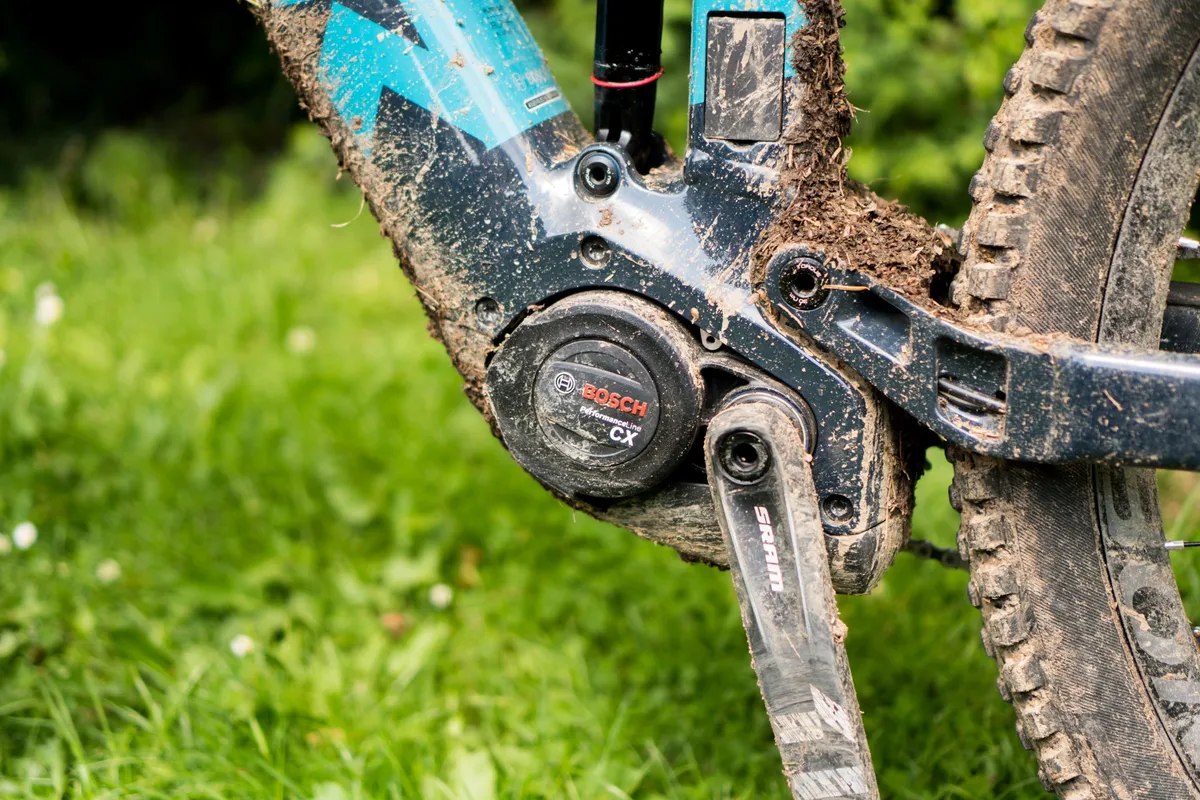Let’s not mince our words; electronics and water are not and never will be friends.
Electric mountain bikes are no exception to that rule, yet mountain biking by nature is a mud and water-ridden discipline; if you’re not getting wet and dirty, you’re an exception rather than the rule.
This poses a conundrum for ebike manufacturers.
Each brand is fully aware their bikes will be traipsed across soggy mountainsides and endure rigorous post-ride washing, while remaining reliable and electronically sound.
Keeping water away from the delicate electronic systems isn’t easy and total weatherproofing still eludes some manufacturers.
Error codes on wet rides – terminal or not – are pretty common. While some of them can be discarded, the internet is also awash with reports of motor failures from all the major constructors.

The obvious rules – that are universal to electric bikes and non-assisted bikes – apply. Don’t use a jet wash on your electric bike motor, just as you wouldn’t pivot bearings; make sure you thoroughly dry the bike post-wash; and keep it stored somewhere sensible. However, some other principles are less obvious.
These four tips should help keep your eMTB riding for longer by reducing the chances of water ingress.
Apply dielectric grease to all of your bike's electronic connections

As the first must-do, I recommend applying dielectric – or tune-up – grease around all electrical connections before you ride your ebike for the first time.
Whether that’s the main battery connection, the smaller controller or switch connectors, or intricate motor connectors, splodging a generous helping of this grease on each cable's join will put you in good stead.
It acts as a barrier to prevent moisture entering connections and causing corrosion or short circuits, extending each your bike's life span.

Keeping water away from these parts is one of the biggest steps in practising good ebike ownership. While connectors will have been designed to be waterproof, there’s nothing wrong with this belts-and-braces approach to water protection.
Work with, not against, gravity

Next up, and just as crucially, is do not wash your bike upside-down.
While each brand’s engineers will surely have done their best to build in as much waterproofing as possible to their frame, it’s likely everything has been designed to work the right way up.
Flipping your bike upside-down and dousing it with water is akin to challenging Newtonian rules of gravity; water, where it usually flows down, is now essentially travelling upwards.

Drain ports turn into entry funnels, directing water into the sensitive electronic heart of your bike. And the blocked-up topside of your bike is now a giant water-collection pan, where electronics can swim in your freshly created pool of water.
Some brands – such as Whyte – have cottoned on to this common method of bike washing, and now officially state you must wash your bike the right way up.
Although this might break a life-long habit of how you wash your rig, keeping it wheels-down means water is much less likely to go where you don’t want it to. Plus, it can drain out of the bottom of the bike as it’s designed to and is less likely to enter through the top of sealed tubes.
Seal up your motor

Most electric bike motors are made in two halves – like a clamshell – and are sealed together with bolts and a gasket.
There’s little you can do as an owner to improve that seal, given it’s closed off in the factory and requires specialist equipment to open and close back up.
But there are things you can do.
The bottom bracket axle passes through the motor, creating two rather large openings either side. While these are usually well sealed, it’s a relatively easy task to improve it.

Removing the cranks and chainring is the first port of call.
Now you can see the motor casing, generously apply grease against the motor where the axle exits it. The idea here is to create a barrier of grease that remains put, helping reduce the chances of water and mud entering the motor.
Once you’ve re-fitted the chainring and cranks, that barrier of grease will be hidden from sight and squashed into place, limiting any unattractive mess.
Tape is your friend

Depending on your frame’s design, your battery may slide in and out of a hole in the end of the down tube or clip into place via a large cutout either underneath or on the tube’s side.
If you’ve got the cutout design, it’s unlikely the battery compartment, and therefore the whole down tube, is particularly well sealed from water and mud ingress. However, it’s very easy and quick to improve on the factory design using electrical tape.

It’s important to use electrical tape; it’s stretchy, it doesn’t leave a residue when you remove it and is less likely to peel paint off compared to other tapes.
Firstly, degrease the down tube and battery or battery cover.
Then, with the battery installed, apply tape to bridge the gap between the battery and tube, creating a seal.

Start at the top of the tube and apply tape down to its base. It’s best to use longer strips of tape so there are fewer joins, and because electrical tape is stretchy and soft, you can push it into gaps and easily remove creases.
Finally, and very importantly, leave a gap at the base of the battery; if water gets in there, it will need to escape, so sealing it up entirely isn’t recommended.
